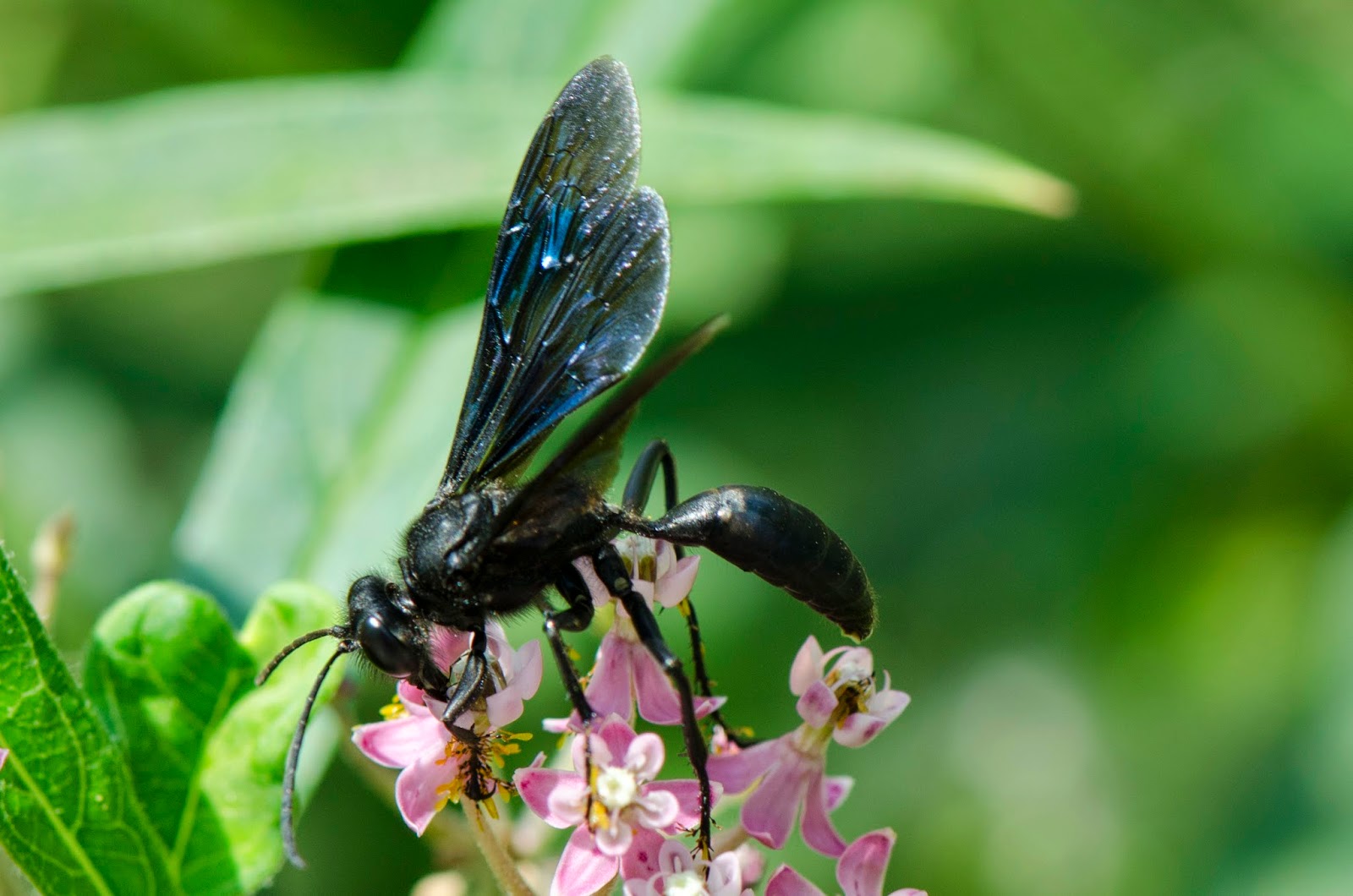The great black wasp, known for its striking appearance and intriguing behaviors, holds a unique place in the world of insects. This species, often found in gardens and fields, plays a crucial role in pollination and pest control, making it an unsung hero of our ecosystems. With its glossy black body and impressive wingspan, the great black wasp can be both fascinating and intimidating to those who encounter it. Understanding this species is essential, not only for appreciating its beauty but also for recognizing its importance in maintaining environmental balance.
Native to various regions, the great black wasp thrives in diverse habitats, from urban gardens to wildflower meadows. These wasps are solitary creatures, unlike their more social counterparts, and exhibit fascinating behaviors that set them apart. Their diet primarily consists of nectar and insects, which they hunt and paralyze to provide food for their larvae. By delving into the life cycle and habits of the great black wasp, we can gain insight into the vital role it plays in our ecosystem and why it deserves our respect and protection.
As we explore the world of the great black wasp, we will uncover its biology, habitat, and behaviors, as well as address common misconceptions. This article aims to shed light on this remarkable insect and encourage a deeper understanding of the natural world. Join us on this journey to discover the secrets of the great black wasp and the ecological significance it holds.
What is the Biology of the Great Black Wasp?
The great black wasp (Sphex pensylvanicus) belongs to the family Sphecidae, known for their solitary nesting habits. These wasps can grow up to 1 inch long, with a shiny, black exoskeleton and long, slender bodies. Their wings are typically translucent, adding to their striking appearance. The great black wasp's distinctive features are not just for show; they play significant roles in its survival, aiding in both hunting and mating.
How Do Great Black Wasps Contribute to Pollination?
Great black wasps are important pollinators, often visiting a variety of flowers in search of nectar. As they move from one bloom to another, they inadvertently transfer pollen, facilitating plant reproduction. This process is essential for the growth of many fruits, vegetables, and wildflowers, making the great black wasp integral to maintaining healthy ecosystems.
What Do Great Black Wasps Eat?
The diet of the great black wasp comprises primarily nectar and insects. They are known to hunt other insects, such as grasshoppers and caterpillars, which they paralyze and bring back to their nests. The larvae feed on these paralyzed insects, ensuring their growth and development. This predatory behavior also helps control pest populations, making the great black wasp a valuable ally for gardeners and farmers alike.
Where Can You Find Great Black Wasps?
Great black wasps are commonly found in various habitats across North America, including gardens, meadows, and open fields. They prefer areas abundant in flowering plants, as these provide essential resources for their diet and nesting. You may spot them buzzing around native wildflowers or foraging in your backyard during the warm summer months.
How Do Great Black Wasps Build Their Nests?
Unlike social wasps that build large colonies, great black wasps are solitary and construct individual nests. These nests are typically dug into the ground, with the female wasp creating small chambers to house her eggs. Each chamber is stocked with paralyzed insects, serving as a food source for the larvae once they hatch. The nesting behavior of great black wasps highlights their unique reproductive strategies and the care they provide for their offspring.
Are Great Black Wasps Dangerous to Humans?
While the appearance of great black wasps may seem intimidating, they are generally not aggressive towards humans. They are more focused on hunting and gathering food for their young. However, like all wasps, they can sting if provoked or threatened. It's essential to respect their space and observe them from a distance to avoid any unwanted encounters.
What Are Common Misconceptions About Great Black Wasps?
Many people often confuse great black wasps with more aggressive species, leading to misconceptions about their nature. Some believe they are a threat to humans or pets due to their size and appearance. However, great black wasps are primarily focused on their ecological roles and pose minimal threat when left undisturbed. Educating ourselves about these insects can help dispel myths and promote coexistence.
How Can We Protect Great Black Wasps and Their Habitats?
Conservation efforts for great black wasps and their habitats are crucial for maintaining biodiversity. Here are some steps individuals can take to support these insects:
- Plant native flowering plants to provide food sources.
- Avoid using pesticides, which can harm wasp populations and other beneficial insects.
- Create a habitat that includes undisturbed areas for nesting.
- Educate others about the importance of great black wasps in the ecosystem.
What Future Research is Needed on Great Black Wasps?
Despite their ecological significance, there is still much to learn about great black wasps. Future research could focus on their behavior, habitat preferences, and interactions with other species. Understanding how environmental changes impact their populations can inform conservation strategies and ensure their continued presence in our ecosystems.
In conclusion, the great black wasp is a remarkable insect that deserves recognition for its contributions to pollination and pest control. By understanding their biology, behaviors, and ecological roles, we can foster a greater appreciation for these solitary wasps and work towards their conservation. As we continue to explore the natural world, let us remember the great black wasp and the vital part it plays in maintaining the delicate balance of our environment.
The Warm Place: A Hidden Gem Of Comfort And Serenity
Unveiling The Early Life Of Griselda Blanco Joven
Discovering The Enchantment Of Duc Tran Plastique Tiara

